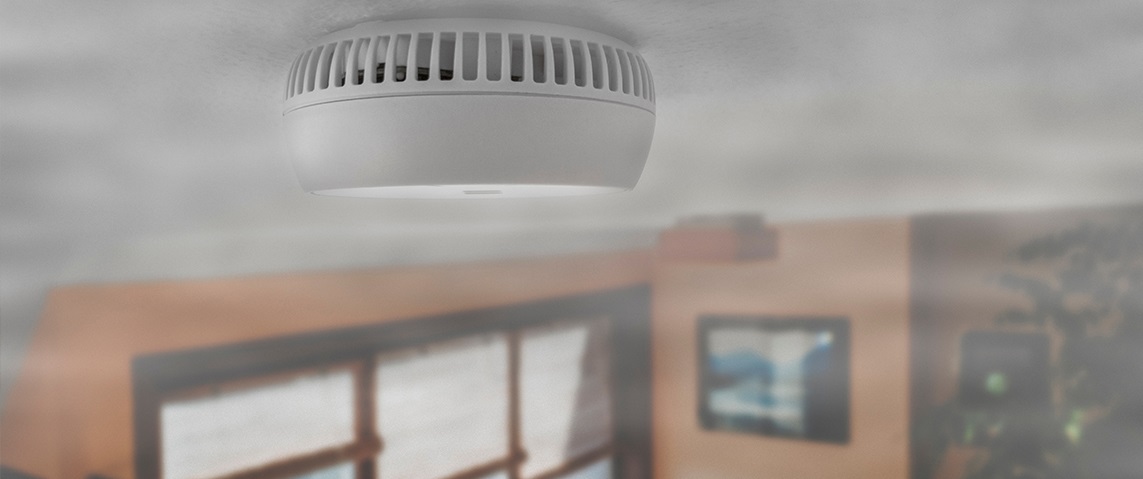What Alarms Do You Need in a Rental Property?

Ensuring the safety and well-being of tenants is a top priority for landlords. A crucial aspect of maintaining a safe living environment in rental properties is the installation of appropriate alarms. Alarms provide early warning in case of emergencies, allowing tenants to respond quickly and take necessary actions. In this blog post, we will discuss the essential alarms that landlords need to consider for their rental properties, helping to protect their tenants and comply with safety regulations.
Smoke Alarms:
Smoke alarms are a fundamental requirement in rental properties. They detect the presence of smoke, alerting occupants to the possibility of a fire. In the United Kingdom, regulations stipulate that landlords must install at least one smoke alarm on each floor of a rental property. The alarms must be in working order at the start of each tenancy. It is recommended to opt for interconnected smoke alarms, so if one alarm detects smoke, all alarms in the property will sound.
When choosing smoke alarms, consider the following factors:
a) Battery-powered vs. Mains-powered: Battery-powered smoke alarms are suitable for most rental properties as they are easy to install and maintain. However, some properties may require mains-powered alarms with battery backup for added reliability.
b) Optical vs. Ionisation Alarms: Optical smoke alarms are more effective at detecting slow-burning, smouldering fires, while ionisation alarms are better at detecting fast-flaming fires. It is recommended to use a combination of both types or dual-sensor alarms that incorporate both technologies.
Carbon Monoxide Alarms:
Carbon monoxide (CO) is a silent, odourless, and deadly gas. Landlords are legally required to install carbon monoxide alarms in rental properties that have solid fuel-burning appliances, such as wood-burning stoves or coal fires. It is recommended to install at least one carbon monoxide alarm in rooms with these appliances. Like smoke alarms, carbon monoxide alarms should be in working order at the start of each tenancy.
When selecting carbon monoxide alarms, keep the following in mind:
a) Battery-powered vs. Mains-powered: Battery-powered alarms are commonly used and are sufficient for most rental properties. However, mains-powered alarms with battery backup can provide added reliability.
b) EN 50291 Standard: Ensure that the carbon monoxide alarms meet the EN 50291 standard, which ensures their effectiveness and accuracy.
Heat Alarms:
While not a legal requirement, heat alarms are worth considering, particularly in kitchens or areas where smoke alarms may produce false alarms due to cooking activities. Heat alarms are designed to detect rapid increases in temperature, indicating the presence of a fire. They are especially useful in kitchens where smoke or steam from cooking could trigger a smoke alarm. Heat alarms are battery-powered and do not detect smoke, so it's important to install them alongside smoke alarms.
Fire Extinguishers:
Although not technically an alarm, fire extinguishers are essential safety equipment that landlords should consider providing in rental properties. Fire extinguishers can help occupants control small fires before they escalate. Different types of fire extinguishers are available, such as water, foam, powder, and CO2 extinguishers, each suitable for different types of fires. It is recommended to consult with fire safety professionals to determine the most appropriate type and size of fire extinguishers for your rental property.
Emergency Lighting:
In case of a power outage during a fire or other emergencies, emergency lighting can provide crucial illumination to help tenants find their way to safety. Emergency lighting systems consist of battery-powered lights that activate automatically when the main power supply fails. While not a legal requirement for all rental properties, emergency lighting is necessary for certain types of buildings, such as Houses in Multiple Occupation (HMOs). It is advisable to consult with fire safety professionals to determine if emergency lighting is necessary for your rental property.
Interconnected Alarms and Monitoring Systems:
To maximise the effectiveness of alarms in rental properties, consider interconnected systems and monitoring options. Interconnected alarms, whether smoke, carbon monoxide, or heat alarms, are linked so that if one alarm is triggered, all alarms in the property will sound. This provides comprehensive coverage and ensures that all occupants are alerted to potential dangers.
Additionally, consider installing alarm monitoring systems that provide real-time notifications to landlords or property management companies. These systems can send alerts to designated individuals or emergency services in case of an alarm activation, enabling prompt response and necessary action.
Conclusion:
Installing the appropriate alarms in rental properties is crucial for maintaining a safe living environment and complying with safety regulations. Smoke alarms, carbon monoxide alarms, and heat alarms are essential for early detection of potential emergencies. Additionally, providing fire extinguishers, emergency lighting, and considering interconnected alarms and monitoring systems can further enhance the safety of tenants. By taking proactive steps to install the necessary alarms, landlords can protect their tenants, minimise risks, and fulfil their responsibilities as providers of secure rental accommodations.
Get a Landlord Home Emergency Cover
Disclaimer: It is always recommended to consult with fire safety professionals or experts to ensure compliance with safety regulations and obtain accurate and up-to-date in

 Appliance
Appliance







